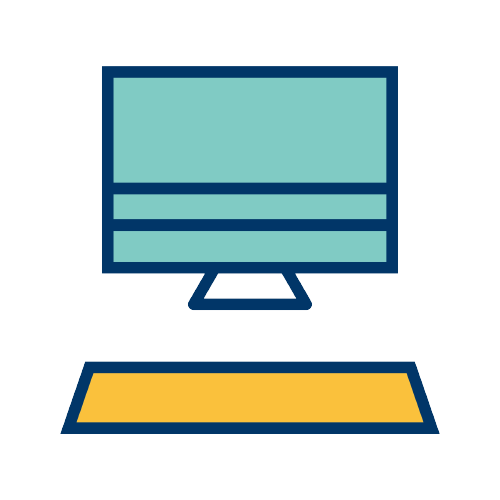Literacy State Development - Template
Course
The course is designed to show how to integrate technology to support evidence-based practices in literacy instruction. Participants will interact with three different phases. Each phase has a self-paced learning opportunity and a synchronous group activity. The phases focus on literacy instruction related to decoding and word recognition, vocabulary, fluency, and comprehension.
Comprehensive Literacy State Development
The course is designed to show how to integrate technology to support evidence-based practices in literacy instruction. Participants will interact with three different phases. Each phase has a self-paced learning opportunity and a synchronous group activity. The phases focus on literacy instruction related to decoding and word recognition, vocabulary, fluency, and comprehension. The focus of each of those components will be focused on a different approach. In phase one, participants will learn evidence-based literacy strategies and tools for instruction while integrating technology. Phase two will focus on technology infused lessons and managements tools. Finally in phase 3, participants will learn collaborative lesson design and reflection.
|
|
Part 1: Self-Paced Activities
Program Introduction & Evidence-Based Literacy Strategies and Tools - Lessons to be completed at the participants' own pace learning about evidence-based literacy strategies and tools related to decoding, word recognition, and vocabulary. Participants will create and interact on a discussion board.
Learning Outcomes:
|
|
|
Part 2: Synchronous Meeting
Evidence-Based Literacy Strategies and Tools - Introduction to cohort member, learning about evidence-based literacy strategies and tools related to fluency and comprehension, and peer-to-peer facilitated discussions.
Learning Outcomes:
|
|
|
Part 3: Self-Paced Activities
Technology Tools and Techniques for Literacy - Lessons to be completed at the participants' own pace learning about technology infused lessons and management strategies. Participants will create and interact on a discussion board. Participants will develop a lesson plan to submit to #GoOpenUSVI.
Learning Outcomes:
|
|
 |
Part 4: Synchronous Meeting
Technology Infused Lessons and Management Strategies - Peer-to-Peer facilitated discussions, continuing to learn more technology infused lessons and management strategies, and sharing lesson plan submitted to #GoOpenUSVI.
Learning Outcomes:
|
|
|
Part 5: Self-Paced Activities
Application of Literacy Tools and Techniques - Lessons to be completed at the participants' own pace learning about collaborative lesson design and reflection. Participants will create and interact on a discussion board. Participants will develop a lesson plan to submit to #GoOpenUSVI.
Learning Outcomes:
|
|
 |
Part 6: Synchronous Meeting
Technology Infused Lessons and Management Strategies - Peer-to-Peer facilitated discussions, continuing to learn more technology infused lessons and management strategies, and sharing lesson plan submitted to #GoOpenUSVI.
Learning Outcomes:
|
Here is the course outline:
Part 1 - Self-Paced Activities (3.5 hours)Program Introduction & Evidence-Based Literacy Strategies and Tools: in this learning module the learner will receive an overview of the course description, overall course agenda, and provides learners with an opportunity to meet the content creators, course facilitator, and one another. Additionally, Part 1 will provide learners with an introduction to the content that will be explored throughout the course. |
Part 2 - Synchronous Meeting (90 mins)Evidence-Based Literacy Strategies and Tools - Introduction to cohort member, learning about evidence-based literacy strategies and tools related to fluency and comprehension, and peer-to-peer facilitated discussions. |
Part 3 - Self-Paced Activities (3.5 hrs)Technology Tools and Techniques for Literacy - Lessons to be completed at the participants' own pace learning about technology infused lessons and management strategies. Participants will create and interact on a discussion board. Participants will develop a lesson plan to submit to #GoOpenUSVI. |
Part 4 - Synchronous Meeting (90 mins)Technology Infused Lessons and Management Strategies - Peer-to-Peer facilitated discussions, continuing to learn more technology infused lessons and management strategies, and sharing lesson plan submitted to #GoOpenUSVI. |
Part 5 - Self-Paced Activities (3.5 hrs)Application of Literacy Tools and Techniques - Lessons to be completed at the participants' own pace learning about collaborative lesson design and reflection. Participants will create and interact on a discussion board. Participants will develop a lesson plan to submit to #GoOpenUSVI. |
Part 6 - Synchronous Meeting (90 mins)Technology Infused Lessons and Management Strategies - Peer-to-Peer facilitated discussions, continuing to implement and apply technology infused lessons and management strategies, and sharing lesson plan submitted to #GoOpenUSVI. |




.png?lmsauth=518dbfea2de5517330dde0b0f1a40075114bc792)
